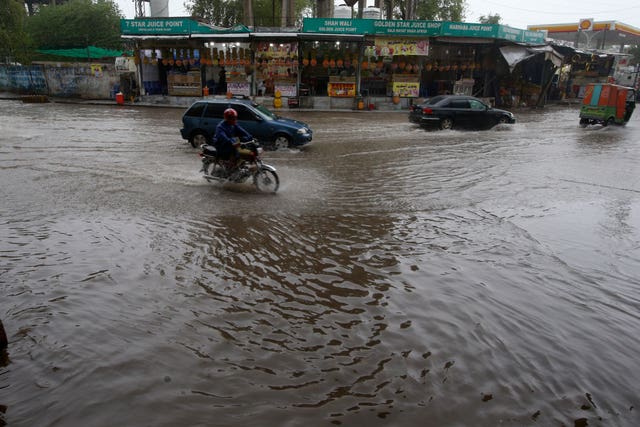Lightning and heavy rains have killed at least 49 people across Pakistan in the past three days, officials said on Monday, as authorities in the country’s south west declared a state of emergency.
Some deaths occurred when lightning struck farmers harvesting wheat. Rains caused dozens of houses to collapse in the north west and in eastern Punjab province.
Arfan Kathia, a spokesman for the provincial disaster management authority, said 21 people had died in Punjab, where more rains were expected this week.
Khursheed Anwar, a spokesman for the disaster management authority in north-western Khyber Pakhtunkhwa province bordering Afghanistan, said 21 people died there.

Prime Minister Shehbaz Sharif said in televised remarks that he had ordered authorities to provide relief aid. Pakistan’s water reservoirs would improve because of the rains, he said.
Rafay Alam, a Pakistani environmental expert, said such heavy April rainfall is unusual.
“Two years ago, Pakistan witnessed a heat wave in March and April and now we are witnessing rains and it is all of because of climate change, which had caused heavy flooding in 2022,” he said.
In 2022, downpours swelled rivers and at one point inundated one-third of Pakistan, killing 1,739 people. The floods also caused 30 billion dollars in damage.
Meanwhile, heavy flooding from seasonal rains in Afghanistan killed 33 people and injured 27 others in three days, according to Abdullah Janan Saiq, the Taliban’s spokesman for the State Ministry for Natural Disaster Management.
More than 600 houses were damaged or destroyed while around 200 livestock died. The flooding also damaged large areas of agricultural land and more than 53 miles of roads, he said.
He said authorities in Afghanistan had provided aid to nearly 23,000 families, and that flash floods were reported in 20 of the country’s 34 provinces.






